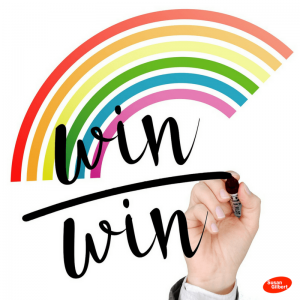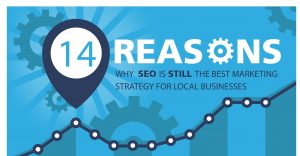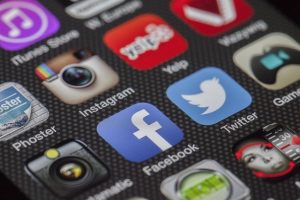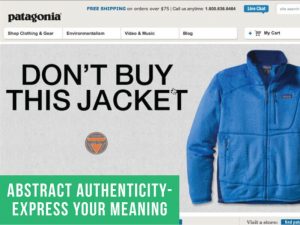One of the perks of my job is that I am able to get out of cold, dark London and visit the Email Evolution Conference (EEC) in Miami. In addition to the fruity cocktails, I also get to hear some of the best email marketing content of the year. This first dispatch will focus on the opening keynote, ‘The Art of Enchantment,’ delivered by internationally-recognized evangelist author and social media expert Guy Kawasaki.
Guy kicked off his keynote by saying something most would find surprising: he admitted that while he’s a true social maven, he would much rather have a consumer’s email address than be connected with them on a social network because email allows marketers to make a true connection and begin a two way dialog. He then regaled us with great stories from his days at Apple. Guy really earned his reputation when he delivered his ten steps to be enchanting as a person (and to a lesser degree, a brand). I was struck by how these same principles could be applied to an email and marketing automation strategy (especially if I took a little creative license).
1. Achieve likeability
Guy points out that to be a likeable human being, you first need to smile – and not that fake Pan Am Smile, the one which starts at your chin and ends at your nose. For those too young to have flown or even remember Pan Am, think of this instead as the Botox smile. No, this has to be a real smile that goes all the way up to the eyes, otherwise known as the Duchenne smile after the 19th century French neurologist that first described it. While the Dechenne smile is the cause of crow’s feet it also shows genuine emotion and relaxes the people around you.
The Duchenne smile manifests itself in your email program by using language which fits with your brand. If your brand is fun and casual, then your email copy should be as well; if your brand is more serious, lighthearted jokes in your email copy not only won’t fit but they’ll actually cause the reader discomfort. You can’t just stop at your email copy though. You need to make sure that this theme carries through everything that you write – even your privacy policy.
Think about the Apple brand: it’s built around the simplicity of their products. Apple’s brand proposition runs through the product, the marketing and the retail stores all the way to the packaging. Then you get to their privacy policy and their T&C’s however, which literally run on for pages and pages. This disconnect not only undermines their likeability but it also hurts them on the trustworthiness front.
2. Achieve trustworthiness
For others to have trust in you, you first have to be willing to trust them. Apple’s reams of T&C’s don’t make me feel trusted and I also feel like they are trying to hide something from me. I love the tongue-in-cheek use of the Tom Waite quote “the big print giveth and the small print taketh away” in the YouCanBook.me privacy policy. The entire policy fits on one screen and lays out what they will do with your data and what they expect from their users in a really clear way. They trust that their customers are not going to go out of their way to abuse them.
In an email context, be clear about why you want your customers’ data and what you will do with it. We talk about delivering relevant email content but in a human context this could be seen as finding something on which you and your customer can agree, another of the points in this section of the presentation.
Guy related a story about two South American diplomats whom had been negotiating for weeks without making any progress when one mentioned to the other that the talks had to conclude by Friday at noon. The first diplomat had to take his wife to the opera and although he personally hated opera his wife regularly made him go with her. The other diplomat was dumbfounded. Not because his adversary was calling a halt to the unfruitful negotiations but because he also hated opera but was made to go by his wife. This one small point for agreement allowed them to find other areas of agreement and conclude the negotiations by the Friday deadline.
While rarely (if ever) will the fates of nations hinge on the success of one of our email campaigns, we must always strive to find those things on which we agree with each and every reader. In other words, which content we have that they find interesting and engaging. We do this through a variety of methods like asking them their preferences but also by looking at the content that interests them through their digital body language (opens and clicks on the emails and our website).
3. Achieve perfection
Guy talked about perfecting your products and services by making them: do more than expected, perform intelligently and empower their users. Unfortunately, as email marketers we rarely have much input into the products our companies produce but put into our context this is a good lesson for email marketers nonetheless.
Too often we do not spend enough time perfecting our email programs. We’re guilty of:
• Rushing the email copy to get the campaign out the door.
• Setting up automation programs only to “fire and forget” them and not optimize the messages therein.
• Performing lots of split stream tests but not taking the time to document the learnings into our own best practice guides.
We need to ensure, based on research and learnings to date, that our programs are well thought through and robust before we launch them as well as following a program of continual improvement on every aspect of our strategy.
4. Create a story
Guy’s point here links directly with email. Nobody likes to be sold to; on the other hand, everybody likes a good story. Cramming your email with facts and figures, offers and deals, and jingles and jargon is not the way to tell a story. Consumers struggle to put even common jargon into context as Guy so clearly showed. Instead of telling me how many calories are in your candy bar, tell me how many miles I have to walk to burn off those calories. Or instead of telling me that your new external hard drive has a two terabyte capacity, tell me how many movies or songs it can hold.
5. Overcome resistance
This will probably not come as a shock to you, but most consumers do not and will not believe your marketing. Your job is to get them to do something they don’t necessarily want to do and their job is to withstand your persuasion. That said, we have already agreed that everyone likes a good story. Use these stories to overcome this natural resistance to your marketing: put the reader into the context of the story so they can imagine themselves using your product. Switch them from resistance, (‘I don’t really need that’), to intense wonder, (‘why don’t I already have that?’). You can put the reader into the context of the story by giving them social proof of your message or specific data supporting your message. Both of these can be delivered in many ways but the case study is a great way to capture both at once.
6. Generate reciprocity
In Guy’s presentation, this section was about building products and brands that endure. The part that struck me most were his comments about reciprocity. In other words, whenever you help someone, do not reply to their thank you with “you are welcome” but rather with “I know that is what you would have done for me.” This sets out the expectation that the other person to make it up to you at some point in the future. Ideally, you will already know what this is and can set that expectation straight away.
While this is a subtle mind shift in your human interactions, it is a monumental mind shift for most email marketers. Think of how many emails you have seen (or even sent yourself) that have been sent from a ‘Do Not Reply’ address. Email is not a broadcast channel – at least not in the way that most people use it – in their everyday interactions. For most people, email is a two-way communications channel. Instead of thinking of your marketing communications as discrete singular activities, you need to think about them as part of an ongoing conversation that could very easily cross channel barriers. Not only can replies be beneficial to your inbox placement, the conversational and human element they add to your marketing is just what your customers expect.
7. Customize your content
Guy’s point here was actually “be a great speaker” but I couldn’t see how this would help you develop a great email program directly. One of components of being a great speaker however, is to customize your introduction to instantly connect with your audience. Do you really think that Guy would rather have an email address as he claimed in his intro or did he recognize that that he was in a room of email marketers and wanted to make an instant connection?
That same kind of customization allows us to connect with our readers. By clearly demonstrating that we know them by including their name, information about the last product they bought or something relevant to where they live, we build an instant connection between the reader and our email.
8. Use technology
You have probably read or heard me say this before, but it’s very easy to have a one-to-one conversation with one, tens or even hundreds of consumers. To have that level of conversation with a thousand, ten thousand or one hundred thousand customers however, requires the kind of scale you can only build through the use of automation technology.
You should definitely have a welcome program or an abandoned basket program but email marketers tend to be so busy that they set these programs in motion and forget about them (save the occasional check in on the stats). You should not to use technology for technology’s sake: each of the emails in these programs needs to be continually challenged and tested so that they are continually being optimized.
Conclusion: Focus on the humanity
I have been saying for the past year that marketers need to add humanity into their email and that the only way to do this at scale is through the use of technology. Brands and their email programs need to be first and foremost likeable and trustworthy. Part of this is based on not treating email as a broadcast medium but rather a conversation. They can then deliver well-crafted emails that tell a story and use personalization to overcome resistance to their message. Isn’t it strange that I was so struck by the notion that applying the same rules that help us engage as people or brands would be beneficial to our email programs too?
(211)







